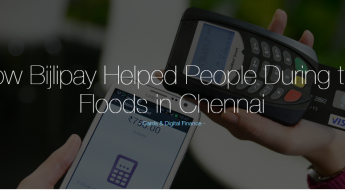The Automated Transaction System (ATM) is one of the most crucial self-service systems in retail banking. It connects banks and financial institutions to customers allowing them to perform transactions with ease. But in recent years, with the development of a digital economy, there has been a rise in the importance of a cashless payment society. The versatility and ease of the digital economy have made ATMs redundant in the past year. Demonetisation acted as a catalyst to this trend as people were unable to withdraw money from ATMs, forcing them to switch to digital payment methods instead. Between May and November 2017, data shows that up to 1782 ATMs across India have been shut down. Since the rise of the digital economy, there has been a steady decline in the use of ATMs. Here are a few reasons why people prefer digital banking over ATMs.
Greater efficiency with UPI payments
With the breakthrough and innovation in payment technologies, many people have made the shift to the Unified Payments Interface (UPI). This system allows people to perform instant money transfers without any bank details at a low cost of Rs. 0.50. When credit cards and NEFT transfers were first introduced, the number of cash transactions did decrease. However, online banking was rarely used at the neighbourhood grocery stores or at the vegetable vendor due to the high cost per transaction. With the introduction of UPI, the low cost and ease of use has made digital payments at small shops more feasible. As more people start using digital cash instead of credit cards, the number of visits to the ATM will drastically decrease.
High transaction costs of ATMs
Another factor that has hampered the growth of ATMs is the costs of setting up the system and the user transaction costs. The fee for ATM transactions is currently Rs.5 for non-cash transactions and Rs.15 for cash transactions. This is an inconvenient expense for customers who are required to pay a high fee every time they withdraw cash or make bank transfers. Moreover, since November of 2014, lenders can now charge their customers for each ATM transaction which has further led to a decline in ATM activity. With a digital economy, customers can make payments and transfers on their mobile devices with transaction costs that are close to null.
High costs of setting up an ATM
Apart from transaction costs, the cost associated with setting up an ATM is also very cumbersome. It costs between 5-7 lakhs to set up an ATM depending on its location, in addition to the rent, electricity and security expenses incurred every month. These costs have increased steadily over the last few years and it can take between 100-150 transactions a day for an ATM to be considered profitable. The direct and indirect costs related to the set-up and use of ATMs has made it an inefficient way to transact in today’s increasingly digitised economy. In contrast to the high costs of setting up an an ATM, mPOS systems such as those offered by Bijlipay have low investment costs and require little to no maintenance.
Digital wallets provide greater security
ATM machines do not require any form of personal identification for a person to make withdrawals or transfers. The bank account number is the only form of identification required by an ATM. Hence if your bank card is stolen, any unauthorised individual can easily access your account. The risk of theft has caused many people to shift to more cashless methods of payment. As more people understand the convenience of digital payment, merchants will upgrade their systems to accept digital payments which will ultimately provide more security and efficiency for customers.
With a UPI wallet, users are not required to share their bank details to perform transactions. There is no need to enter in your CVV when making payments and you are only required to provide a virtual payment address that is not related to your bank account in any way. Your payment is authorised on your smartphone by entering two different pins. The high level of security associated with digital transactions has made it the preferred method of transacting.
There are more than a 135 million credit and debit transactions each year and the digital payments companies have a significant share in the market. Many banks are now analysing the cost structure of ATMs and closing down or relocating the ones that are not profitable. With the availability of better alternatives such as UPI wallets and low-cost mPOS machines, the number of ATMs is likely to fall even lower.
You must be logged in to post a comment.




Leave a Comment